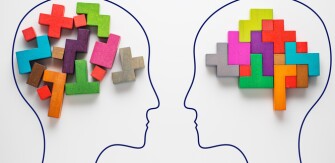
Great teachers don’t just know their content and pedagogy: They inspire in their students passion for their learning. Studies have shown the importance of this deep engagement, but it’s been harder to show exactly how teachers make this kind of connection.
A new project by researchers from the University of Southern California and Bank Street College seeks to shed some light on those connections out with in-depth observations of teachers who are adept at steering students through adolescence, one of the most emotionally volatile periods of their academic career. Teachers were not chosen randomly, but recommended for the by their principals for being particularly effective at engaging their students.
“The teachers are being observed and interviewed about what they believe about learning, what they think about their students ... [and] the way in which their own emotional energy is being transmitted and modulated in the classroom,” said Mary Helen Immordino-Yang of the University of Southern California, who leads the study.
“What we’re really trying to do is characterize for the first time, in a much deeper way, the kind of integration between social emotional and cognitive work that effective teachers do ... and how this affects how students own their own thinking and engage deeply with material and become motivated,” she said.
Before each class, teachers talk through what they hope to achieve in the lesson. Then, during class, researchers monitor teachers’ brain activity, emotional and stress responses, vocal patterns, and body language to try to understand how teachers’ practices and physiological responses affect how well students connect with their lesson, according to Doug Knecht of Bank Street College, who developed the classroom observations.
For example, vocal recordings paired with sweat sensors can show minute-by-minute changes in teachers’ stress levels. This, in turn can be compared to the video recordings of the class to identify how teachers respond to questions, problems, or individual responses from students.
“One of the most important things to walk away with is that teachers, especially great teachers, are making decisions that aren’t out of a playbook necessarily—or not even that obvious to them consciously—but they’re making decisions because of what they’re getting from their kids as part of their relationship in the moment,” Knecht said. “I think that is one of the harder things for novice teachers to figure out because they aren’t secure enough yet in how they are relating with their students” even when they are secure in their content knowledge, he said.
Paul Burns, a science teacher at Intellectual Virtues Academy, a Long Beach, Calif., area charter school, was among the first 15 teachers observed. He said it took a while to adapt to teaching while wearing a wrist monitor to track his stress levels and a microphone recording him, but the experience has helped him reflect on his own practice.
“I teach science, so I loved the idea of being part of science,” Burns said, but added he also hopes the study will be able to scientifically validate the importance of how teachers connect with students. “There are lots of people that don’t really know what happens in the classroom until they actually come to the classroom and try to be a teacher for anywhere between 25 and 35 students. Right? And they don’t really have a full respect for it. So it was intriguing to me to see what could potentially be going on inside of anyone’s brain while that’s happening,” he said.

In addition to the class observations, teachers are asked to think through feedback for their students for an assignment while in a functional magnetic resonance imaging, or fMRI, machine, which measures their brain activity, such as in Burns’s very own scan at left.
Burns recalled being asked to think about each of his students in turn, and then give feedback to them as though they were standing in front of him.
“It was really quite interesting. I was very moved in doing that part of the exercise,” he said. Thinking through how he would give feedback to each of his students has made him more thoughtful about both his own and his students’ emotions when planning to give them directions or feedback in class, he said.
The researchers are still collecting data on more than 40 teachers across multiple subject areas, to identify differences and similarities in how teachers engage with students in different disciplines. They expect preliminary results next year.
Photo: Paul Burns, is helping researchers understand how teachers engage their students in the classroom. Source: Paul Burns, Mary-Helen Immordino-Yang
Top photo source: Getty
